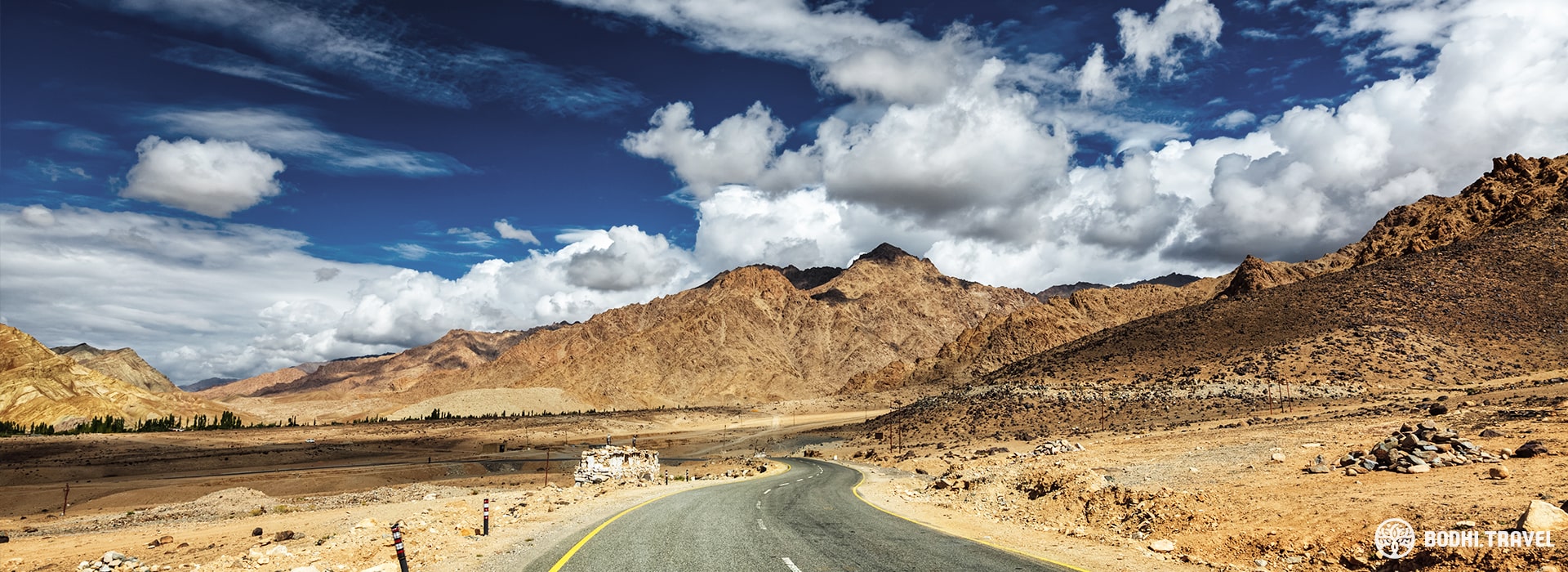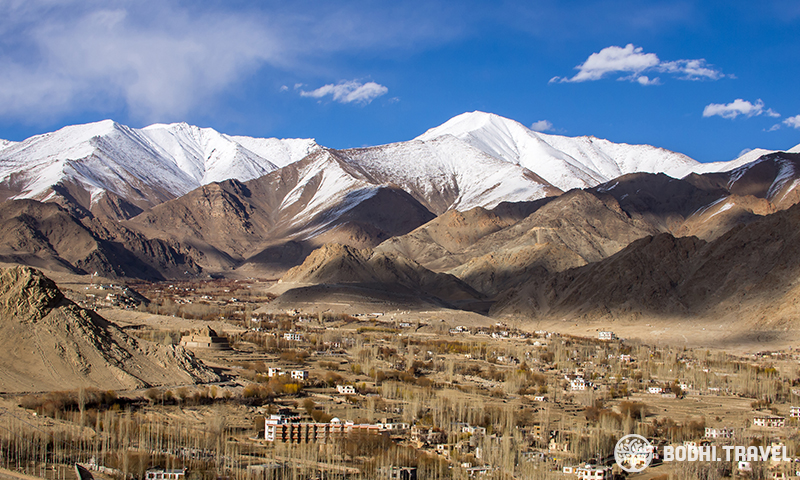
10 DAYS IN SEARCH OF SPIRITUALITY IN LADAKH
Ladakh located in the Indian state of Jammu and Kashmir. It is one of the most sparsely populated regions in the state and renowned for its remote mountain beauty and culture. Located over 3,000m, Ladakh is the highest plateau in the state of Jammu & Kashmir and extends from the Himalayas to the Kunlun Ranges and includes the upper Indus River Valley.
Leh has been an important stop during trade routes from as early 1500 years ago. Today it is the capital of Ladakh and the location of the Leh airport, making it the starting point of most tourists.
ITINERARY
DAY 01 & DAY 02 Day 03 Day 04 Day 05 Day 06 Day 07 Day 08 DAY 09 & DAY 10Day 01 – DEPARTURE FROM SINGAPORE
Day 1 : Arrive Delhi
Today we arrive into the pulsating metropolis of Delhi. Despite its recent metamorphosis into a cosmopolitan hub for global business, media, technology, and fashion, Delhi is also a surprisingly green city, with whole swaths given over to gardens, parks, and protected woodlands. This city is the true hub of the country, and a symbol of India old and new!
Overnight stay at hotel
Included Meals: None
Day 2 : Fly Delhi - Leh
Early this morning we fly up to Leh (3524 m / 11,562 ft). This surely is one of the most sensational scheduled flights in the world, taking you right over the top of the Greater Himalaya before dropping down to the small airport at Leh. The breathtaking beauty, combined with the warmth and friendliness of the locals is what draws many to Ladakh. This is a land of jagged mountains, picture-perfect Gompas (Tibetan Buddhist monasteries) and colourful fluttering prayer flags!
On arrival you will be welcomed and escorted to our hotel where room has been booked for your ready occupancy. The rest of the day is free to relax and acclimatize to the altitude (3,524m), and it is advisable to take it easy for this first day. We will have our lunch at hotel . Let's take advantage of our first hours in Leh to visit its markets and its historic center. Dinner in town to taste the Tibetan specialties.
Night stay at hotel.
Included Meals: Breakfast, Lunch and Dinner

Day 03 – IN LEH
Day 3: In Leh - Visit to Choglamsar - Meeting with a Shaman.
After a leisurely breakfast, we will drive to the small town of Choglamsar, very close to Leh. We will meet a Lhamo there, at her home. The Lhamo are female shamans. To become a shaman in Ladakh, you must first be recognized for having the “gift of shaman”. You are then taken for a training that will allow you to master the art of corresponding with the protective spirits who will help you to heal people in need. Lhamos are very popular in Ladakhi society. Many people come to consult them daily. Do you have a doubt, a question to which you are seeking an answer? Your session this morning with a Lhamo may well help find an answer. We will then visit the Tibetan Children's Village school (TCV), also known as the school of the Dalai Lama, where Tibetan children in exile benefit from the necessary quality education. Return to Leh.
Night stay at hotel.
Included Meals: Breakfast, Lunch and Dinner
Day 04 – IN LEH
Day 4: In Leh - Visit to Matho Monastery - Buddhist teachings & The art of mindfulness
Today we take a short drive to visit Matho Monastery, a Tibetan Buddhist monastery built around 500 years ago which belongs to the Sakya order. Is the day of self-contemplation, the day we practice the art of mindfulness. It will take you on a journey through the history of Buddhas and bodhisattvas to the monks of today. Wake up early to attend the Puja of the monks in the main prayer hall of the monastery. We will experience the vibrant characteristics of Buddhist monks, who sing to raise the collective consciousness. They sing the ancient scriptures in deep, resonant tones. Today, the day is dedicated to your journey of inner search. We will stay in the monastery and its close surroundings. Try to meditate and connect with the calmness and wisdom of Buddha. This is the perfect opportunity to ask yourself questions that you could never have asked yourself in your daily life. Or simply live the experience of being here today close to the Buddhist dharma.
We will be able to exchange thoughts with the monk which will allow us to reach a deeper understanding of life and explore other Buddhist practices. In the old chapel opposite Buddha Sakyamuni, you will be introduced to the life of the Buddha and Buddhist philosophy. The concept of bodhisattvas through "Rigsum Gonpo" will be an inspiration that you can keep all your life!
You also have the option of walking through the narrow streets to the meditative cave of the founder of the monastery or strolling through the valley and the village. Later we return to Leh.
Night stay at hotel.
Included Meals: Breakfast, Lunch and Dinner
Day 05 – DRIVE TO ALCHI
Day 5: Drive to Alchi (Approx 2 hours)
Today we drive down the Indus Valley. We cross the Indus River and we will also pass the confluence with Zanskar. Enroute, we stop in the very fertile village of Saspol and take a walk to the caves, which are in a rock face above the village. One of the greatest tantriks in Tibetan Buddhism, Guru Padmasambhava, meditated here 1,400 years ago. The main cave is decorated with beautiful paintings, which are probably similar in age to those in Alchi. It's amazing that this sacred and important place is so rarely visited, most people don't even know about it.
We then drive to Alchi monastery, a marvel of mandala art, which is on the other side of the Indus. The monastery complex of Alchi is not situated majestically on a mountain peak like most monasteries in Ladakh, but rather inconspicuously in the village between trees and fields. The monastery with its exquisite paintings that are up to 1000 years old is one of the most valuable in terms of art history in the entire Himalayas. In the afternoon, we will discover the treasures of Alchi Monastery, with its splendid frescoes and sculptures, created by artists from Kashmir in the 11th century.
Overnight stay at hotel.
Included Meals: Breakfast, Lunch and Dinner
Day 06 – DRIVE TO LEH
Day 6: Drive to Leh via Lamayuru Monastery (approx. 4 hours)
After breakfast, we will proceed to visit the Lamayuru Monastery Oldest Monastery of Ladakh. This is one of the most impressive monasteries in Ladakh. It lies above the legendary Moon Valley with bizarre rock formations. Not to be missed is the seldom visited Sengge Lhakhang. This "Lion Temple" lies below the actual monastery and is overlooked by most visitors. The wrathful protective deities and dancing skeletons on the walls give the room a mysterious atmosphere. Afterwards we drive back to Leh, the rest of the day is free at leisure.
Night stay at hotel.
Included Meals: Breakfast, Lunch and Dinner
Day 07 – DRIVE TO NUBRA VALLEY
Day 7: Drive via Khardungla Pass to Nubra Valley (approx. 4-5 hours)
Today, we leave the Indus valley to join another wild and special one, further north to Nubra Valley also known as Valley of flowers, a winding road in a mineral landscape, sand and stone, to reach Khardung La (5600 m), where you stop to enjoy the splendid view of the city of Leh and the Stok Mountain range which dominates towards the South. Here you have an opportunity to take a short break at roadside cafes and scenic points for photography. You take the road again to reach the valley below, in an increasingly green landscape, crossing isolated villages until you see the very beautiful Shyok River, turquoise waters on ocher mountains. The valley, which formed part of the ancient Silk Route, is one of the most isolated places in India. Do not miss spending time observing the starry night sky.
Night stay at hotel.
Included Meals: Breakfast, Lunch and Dinner
Day 08 – NUBRA VALLEY
Day 8: In Nubra Valley - Visit to Yarab Tso and Sumur
On the trail of the Silk Route and in the Valley of Flowers. After an early breakfast, the Diskit monastery awaits you with a view of the entire valley. We will also see the statue of Maitreya, which was inaugurated by the Dalai Lama. Later, we will visit the Samstanling complex , a 140-year-old gompa (beautiful frescoes and Tangkas). Also visit the Ensa monastery , the oldest in the valley. In the late afternoon, your guide will deliver a mantra recitation, followed by a meditation session by the lake Yarab Tso, the sacred lake of the visionary.
Night stay at hotel.
Included Meals: Breakfast, Lunch and Dinner
Day 09 – LEH TO DELHI
Day 9: Drive to Leh - Free day (approx. 4-5 hours)
Today after a leisurely breakfast we drive back to Leh. In the afternoon we arrive at Leh and check-in at our hotel. The reminder day is at leisure for personal exploration and our last purchases in the bazaar; climb a lookout point over Leh.
Night stay at hotel.
Included Meals: Breakfast, Lunch and Dinner
Day 10: Fly Leh - Delhi - Departure
After enjoying a hearty breakfast, transfer you to Leh Airport and board your flight to Delhi. Your tour concludes upon arrival at Delhi’s Indira Gandhi Airport for your onward or homebound flight.
Pricing: Please contact with us
* Can be arranged through us upon request
* All travellers are strongly encouraged to purchase a comprehensive travel insurance before departure.
Talk to our travel representative for more information now!
< You may read about our Disclaimer, Privacy and Data Protection Policy, Terms & Conditions and FAQs here. >





